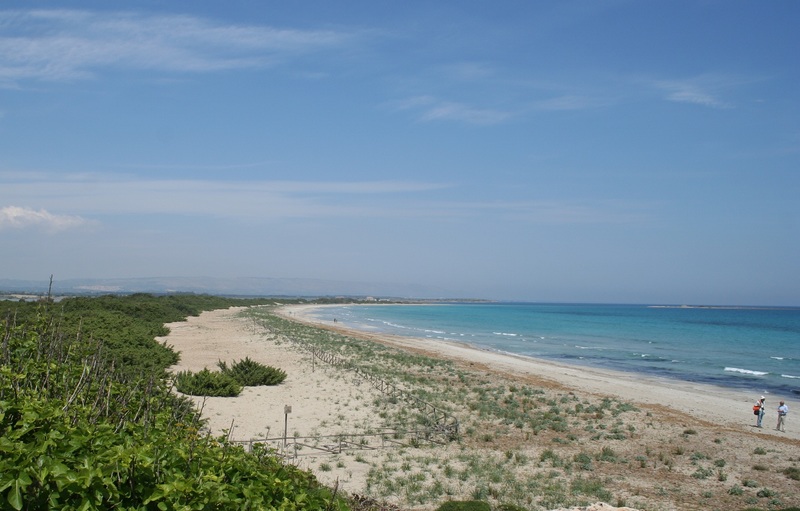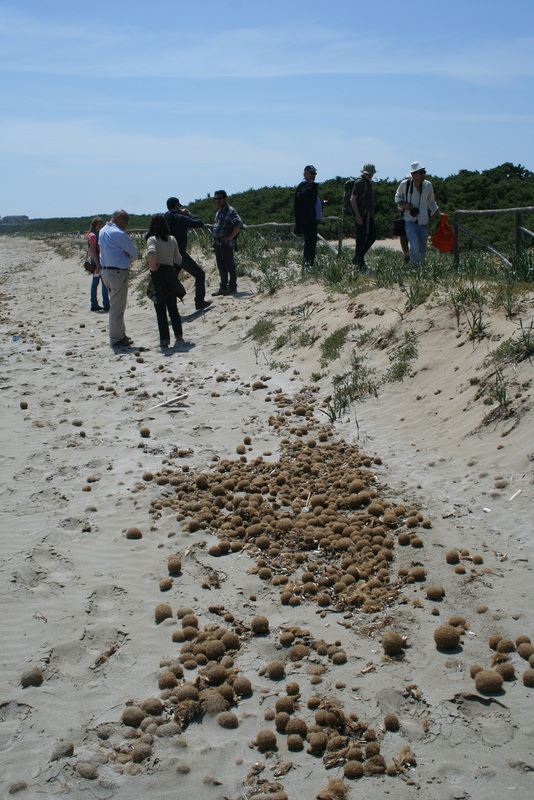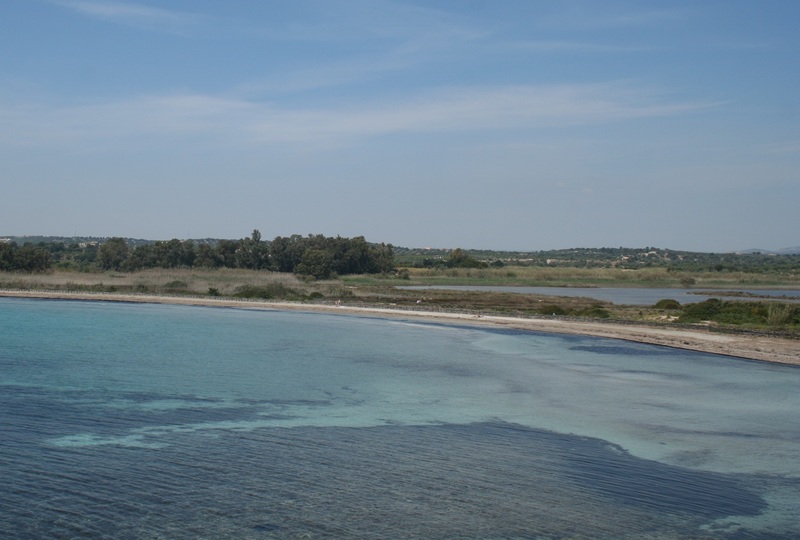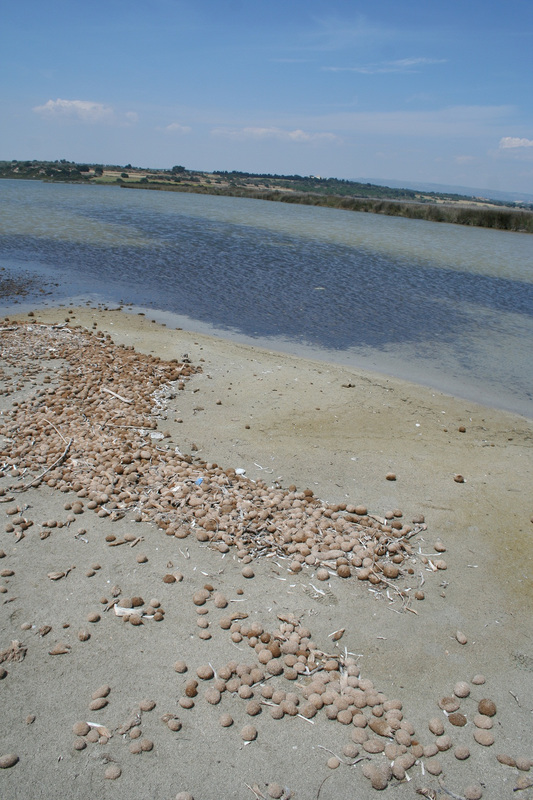Kiwi fruits on the beach in Sicily?
Last 18th-20th April a useful and interesting workshop was held in the beautiful Orto Botanico di Catania, focusing on Plant Conservation on Mediterranean Islands.
On the last day we had a field excursion to one of the best conserved protected areas of Sicily. We visited the Natural Reserve of Vendicari in Siracusa, and the Director of this protected area explained the work they were doing to restore and increase the conservation status of the dune habitat and to facilitate the consolidation of a nesting site for the Loggerhead Turtle (Caretta caretta) in the beach.

Natural Reserve of Vendicari, Sicily (Photo: T. Gil)
All along the beach there were hundreds of “kiwi fruits” which really caught our attention and aroused my curiosity. These curious fibrous balls are formed from the rotting foliage of Neptune Grass (Posidonia oceanica), an endemic flowering plant of the Mediterranean which has adapted to live underwater.

Participants in the workshop with the Director of the Natural Reserve of Vendicari (Photo: T. Gil)
Fibrous tissues from dead plants are tossed by waves, and the constant rolling action of the sea transforms the material into perfect balls that are brought to the shore by the tide.

Detail of a Neptune Grass ball (Photo: T. Gil)
This flowering plant forms large undersea meadows that have an extremely high ecological value, as several species find food and protection inside this habitat. The meadows are considered an indicator of the quality of marine coastal areas and have an important role in the protection of the beach against the erosion. Sadly, habitat destruction and sea pollution are seriously threatening this habitat in the Mediterranean Sea.

Underwater meadows of Neptune Grass (Posidonia oceanica) (Photo: T. Gil)
Finding these curious balls on the beach was not only amusing; it was also a good signal that we were in an important site for biodiversity conservation.

Fibrous balls and underwater meadow of Neptune Grass (Posidonia oceanica) (Photo: T. Gil)

